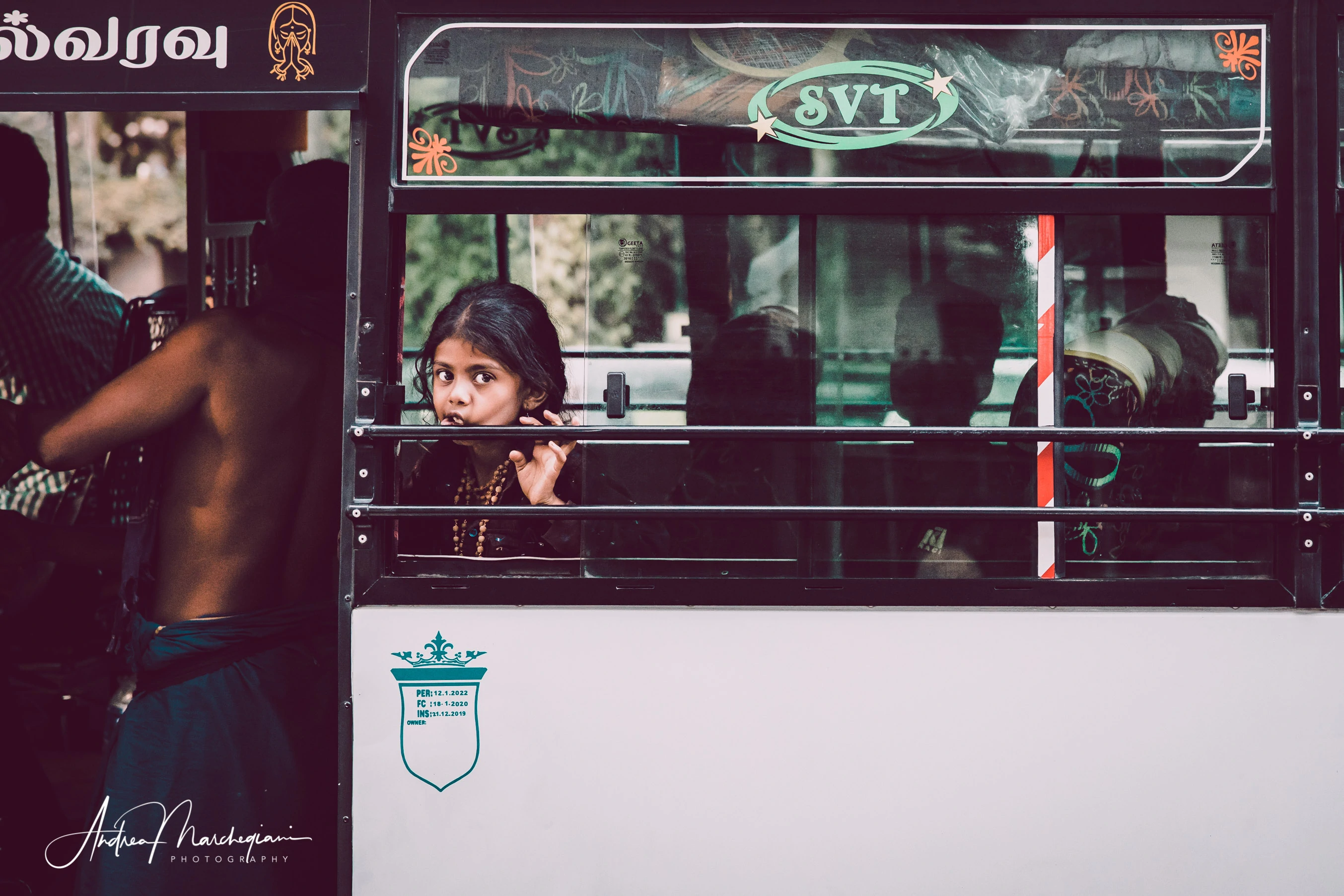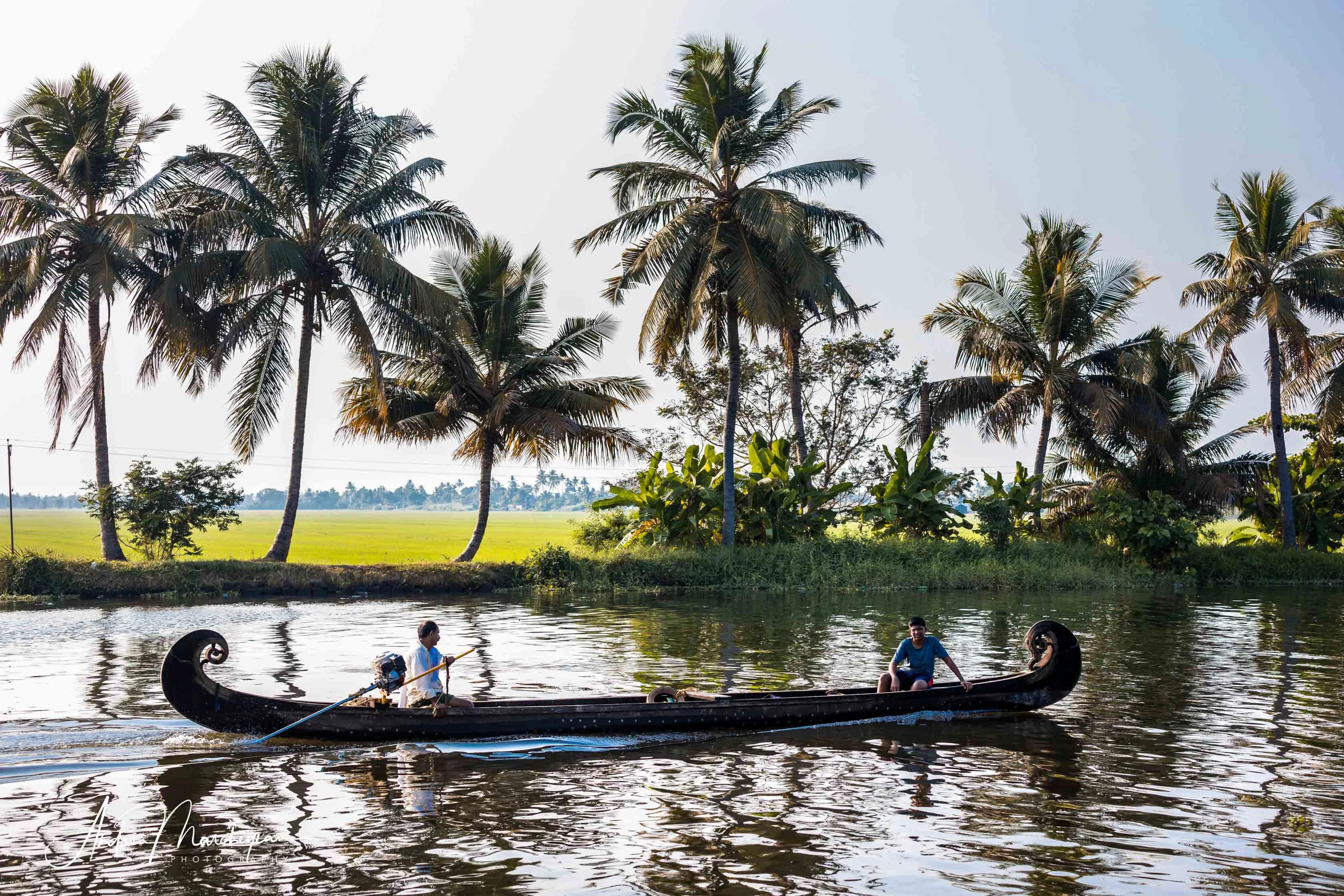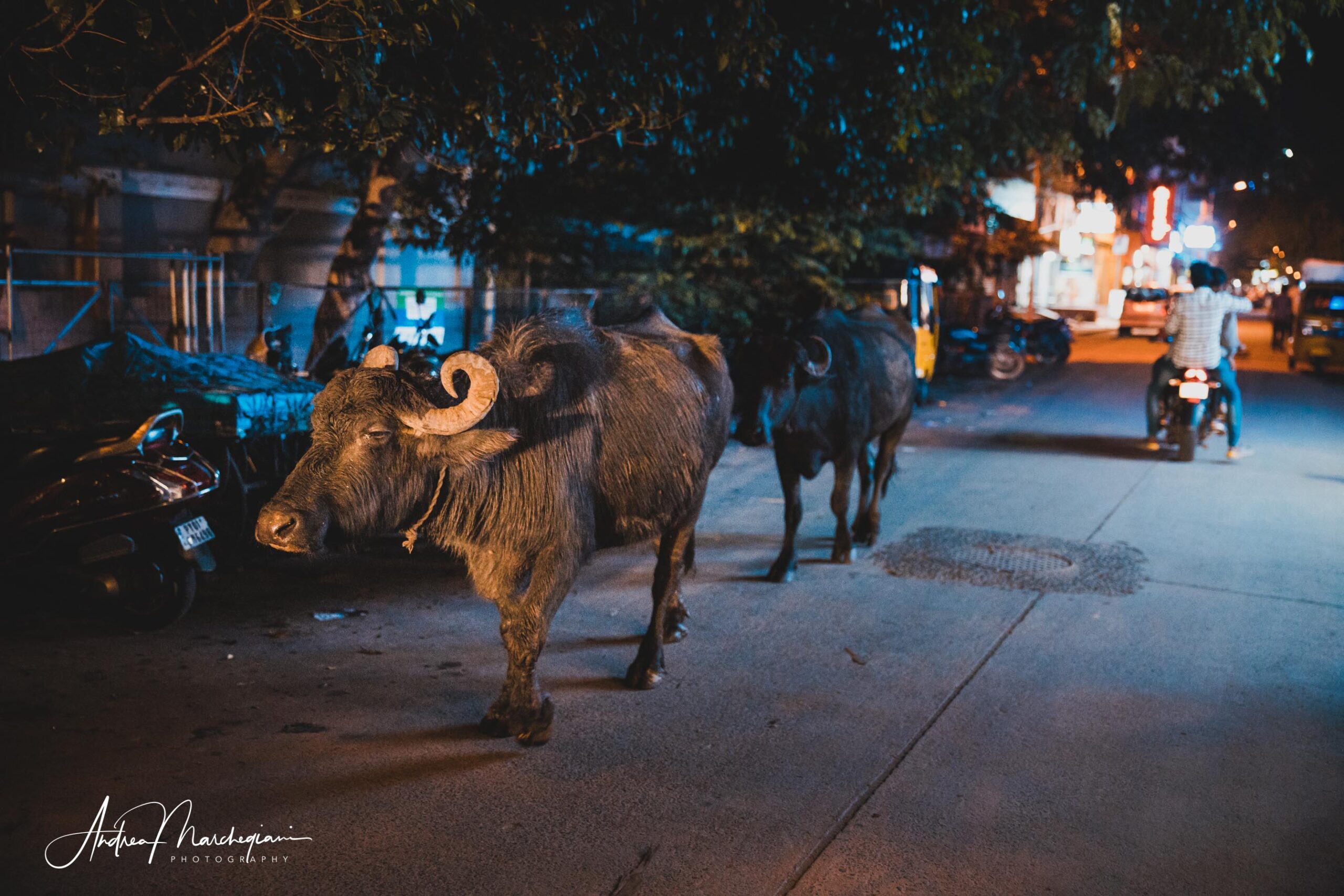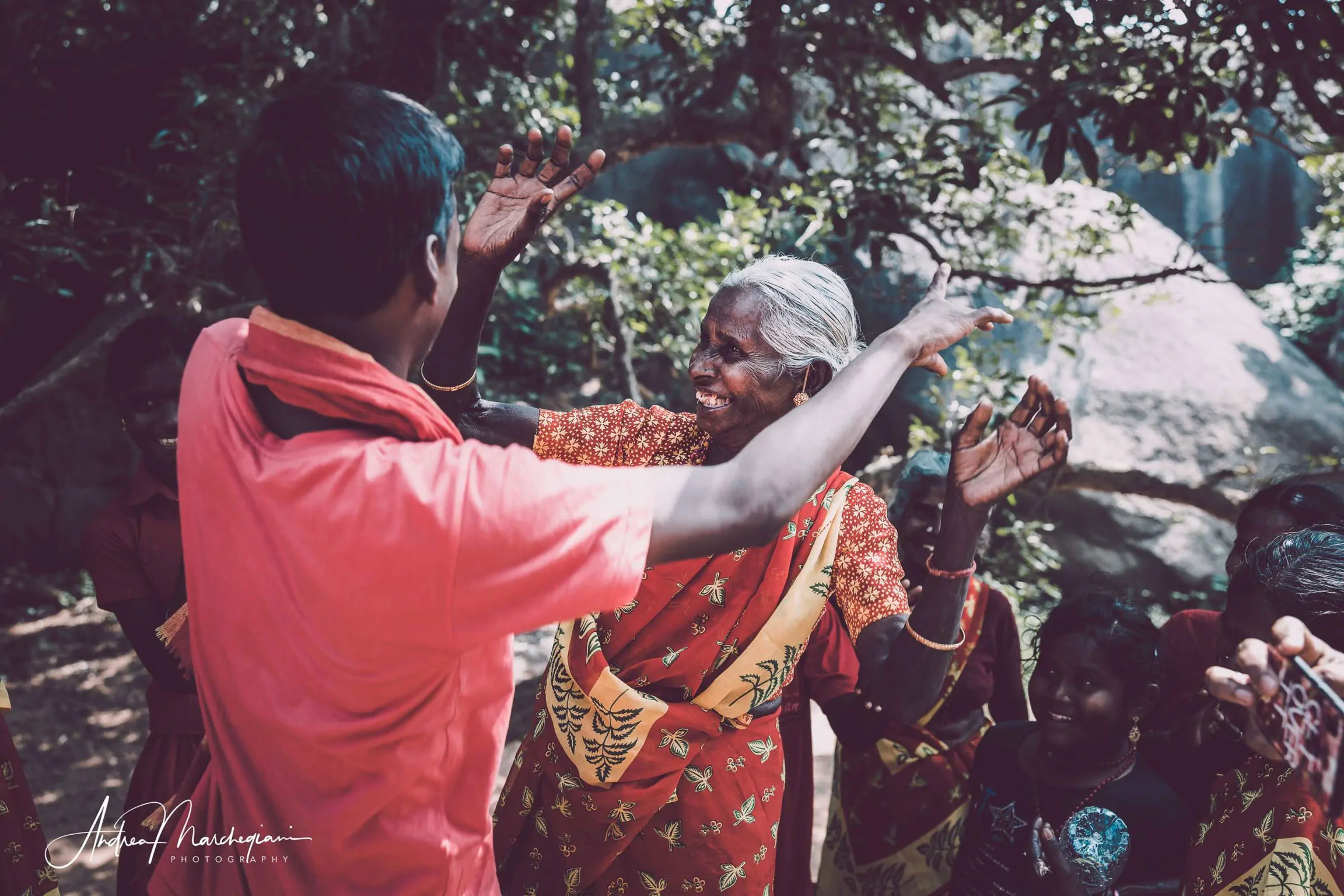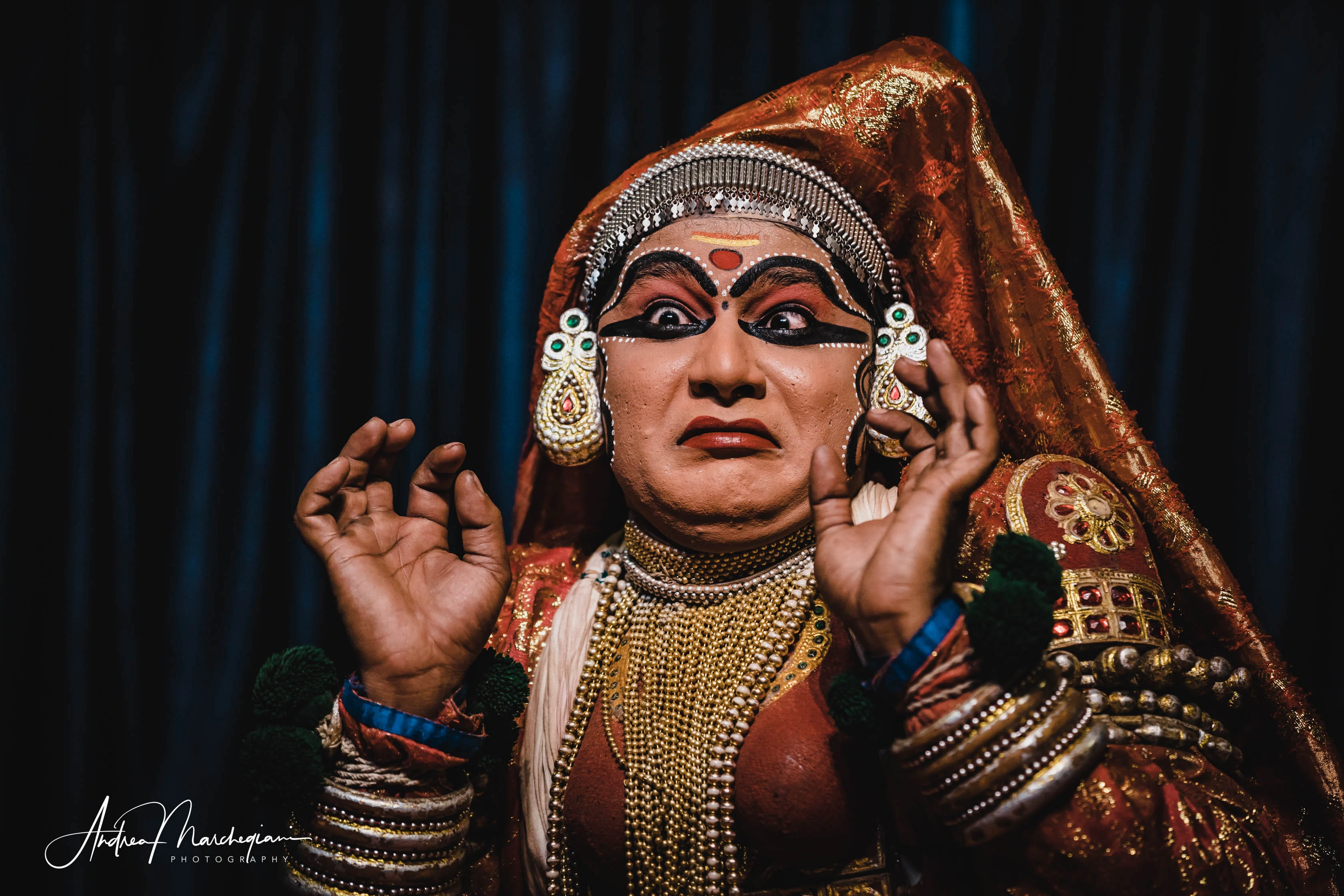
- Home
- Photo Galleries
- Portrait Photography
- Landscape Photography
- Street Photography
- China
- Ethiopia
- India
- Holy Ganges
- Varanasi
- Varanasi Ganga Aarti
- Varanasi, Manikarnika Ghat
- Varanasi Streets & Alleys
- Varanasi Demolition
- Varanasi Fruit Market
- Sarnath
- Brick Kilns
- Tamil Nadu, Chennai & Mamallapuram
- Tamil Nadu, Fort Tirumayam & Madurai
- Tamil Nadu, Tiruvannamalai & Thanjavur
- Kerala, Munnar
- Kerala, Peryiar
- Kerala, Backwaters
- Kerala, Kochi
- Kazakhstan
- Myanmar
- Senegal
- Uzbekistan
- Travel Blog
- China
- Ethiopia
- India
- Tamil Nadu & Kerala
- Varanasi
- Whato to do in Varanasi
- Varanasi Life along the Ghats
- Varanasi Death along the Ghats
- Varanasi Ganga Aarti Ceremony
- Varanasi demolished to honor Shiva
- Varanasi Fruit Market
- Sarnath
- All about River Ganges
- Holy Shit. All about Indian Cow Dung
- Clean India Project
- Brick factories
- Tilaka, pundra, bindi: what is the mark on Indian foreheads?
- Kazakhstan
- Mongolia
- Ulaanbaatar, the coldest capital in the world
- What to do in Ulaanbaatar
- Chinggis Khan Museum, 6 floors of Mongolian history
- Gorkhi-Terelj National Park and Bodgkhan Natural Reserve
- Altai Mountains, Things to do in Olgii and Sagsai
- Living with the Eagle Hunters
- Sagsai Eagle Festival
- Navrus Festival
- Xöömej, Mongolian throat singing
- Mongolian Food
- Myanmar
- Senegal
- Uzbekistan
- Latest Posts
- Photography Blog
- About
- Prints
Share with your friends:
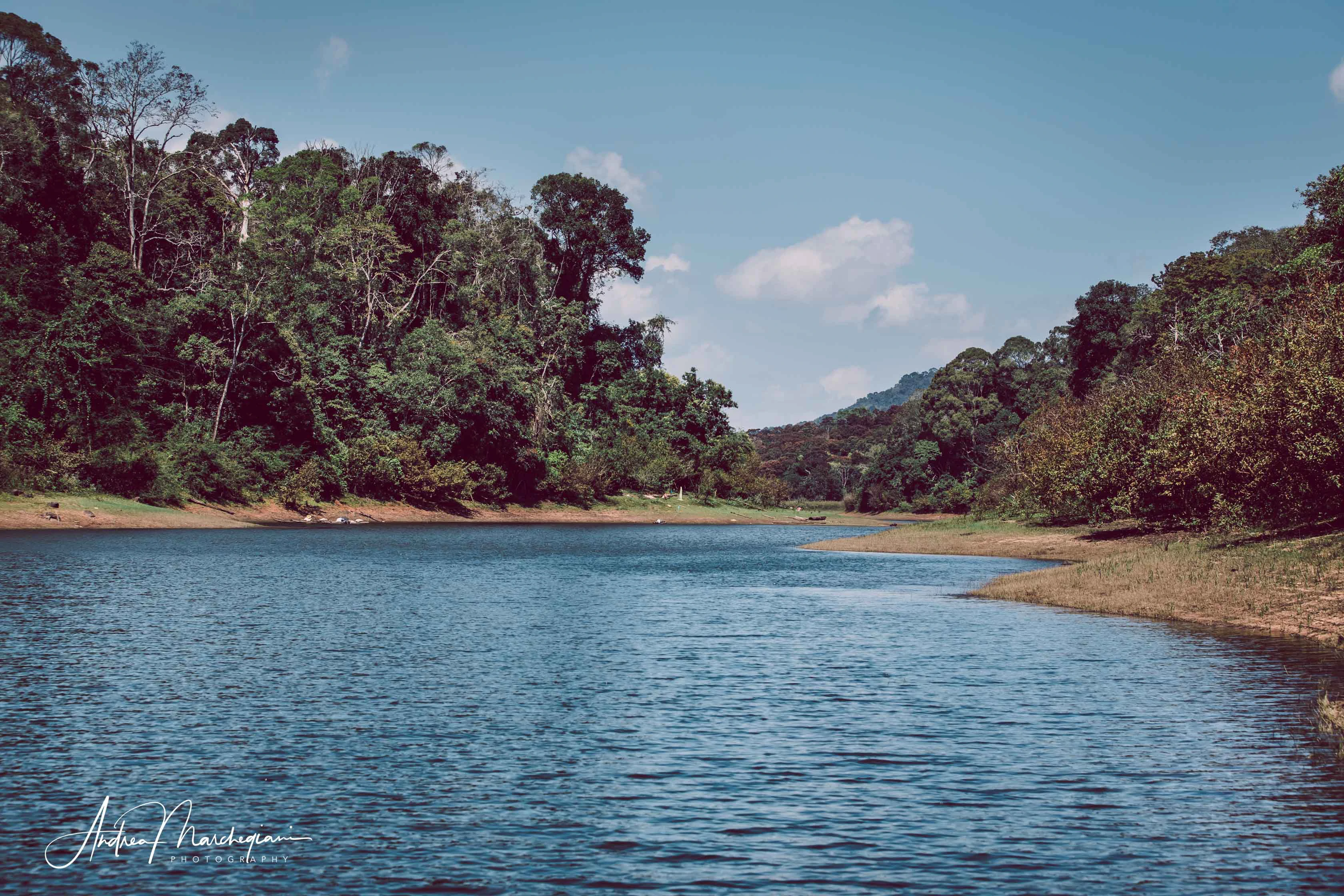
Welcome to Thekkady
Thekkady is one of those names you struggle to memorize, even after you’ve been there. Yet this small town on the Ghati plateau gives me one of the most intense and stimulating days of my trip to Kerala and Tamil Nadu.
In Thekkady you come to explore, armed with binoculars, the heart of the Periyar National Park, the most famous wildlife reserve of southern India. But it is also a fantastic place to watch a Katakhali dance show, attend a typical cooking class and discover the adrenaline-pumping martial art of Kalaripayattu. In addition, the food in the restaurants is really great and the weather stays cool throughout the summer. So don’t miss it!
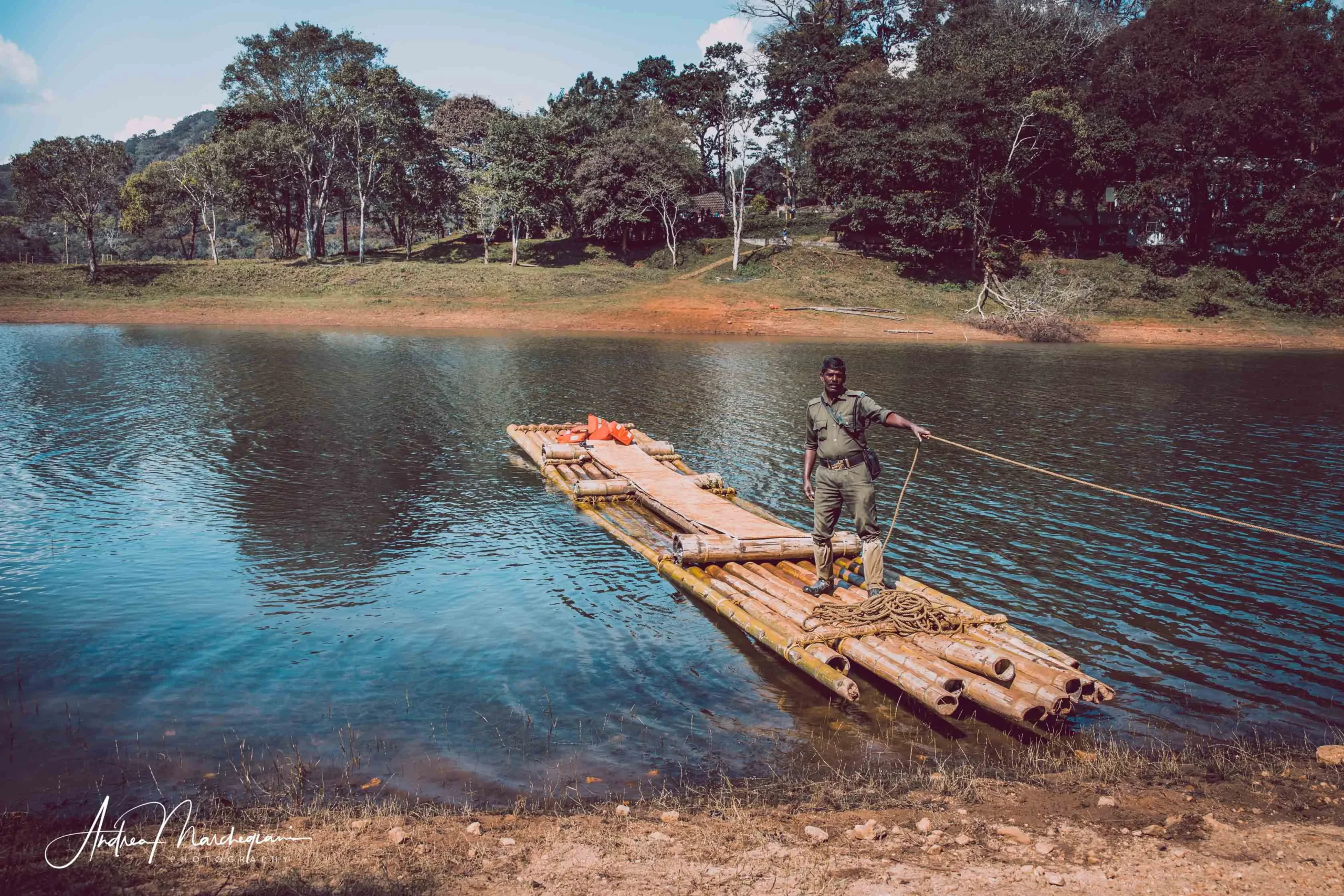
Periyar National Park
On the western side of the Ghati Mountains, a few kilometers from Munnar and its vast tea plantations, stands the Periyar National Park. It is the most famous reserve of Southern India, spread over 900 square kilometers at 1400-2000 meters above sea level. The area is bathed by several rivers, is home to an artificial lake and is shaded by lush forests of teak and eucalyptus interspersed with beautiful grasslands. Here you can admire 140 species of orchids and spot elephants, Bengal tigers, monkeys, bison, wild boars, wild dogs and many tropical birds.
The origin of the park dates back to 1939, when the area was declared a private hunting reserve to stop the advance of tea plantations. After 1950, the Indian government made it a wildlife sanctuary, while since 1982 its innermost area has been elevated to the rank of national park and made inaccessible to tourists.
The Indians refer to the reserve as Periyar (the river that crosses it), Thekkady (the village in the heart of the park) or Kumily (the nearest town). This can be confusing, so keep that in mind.
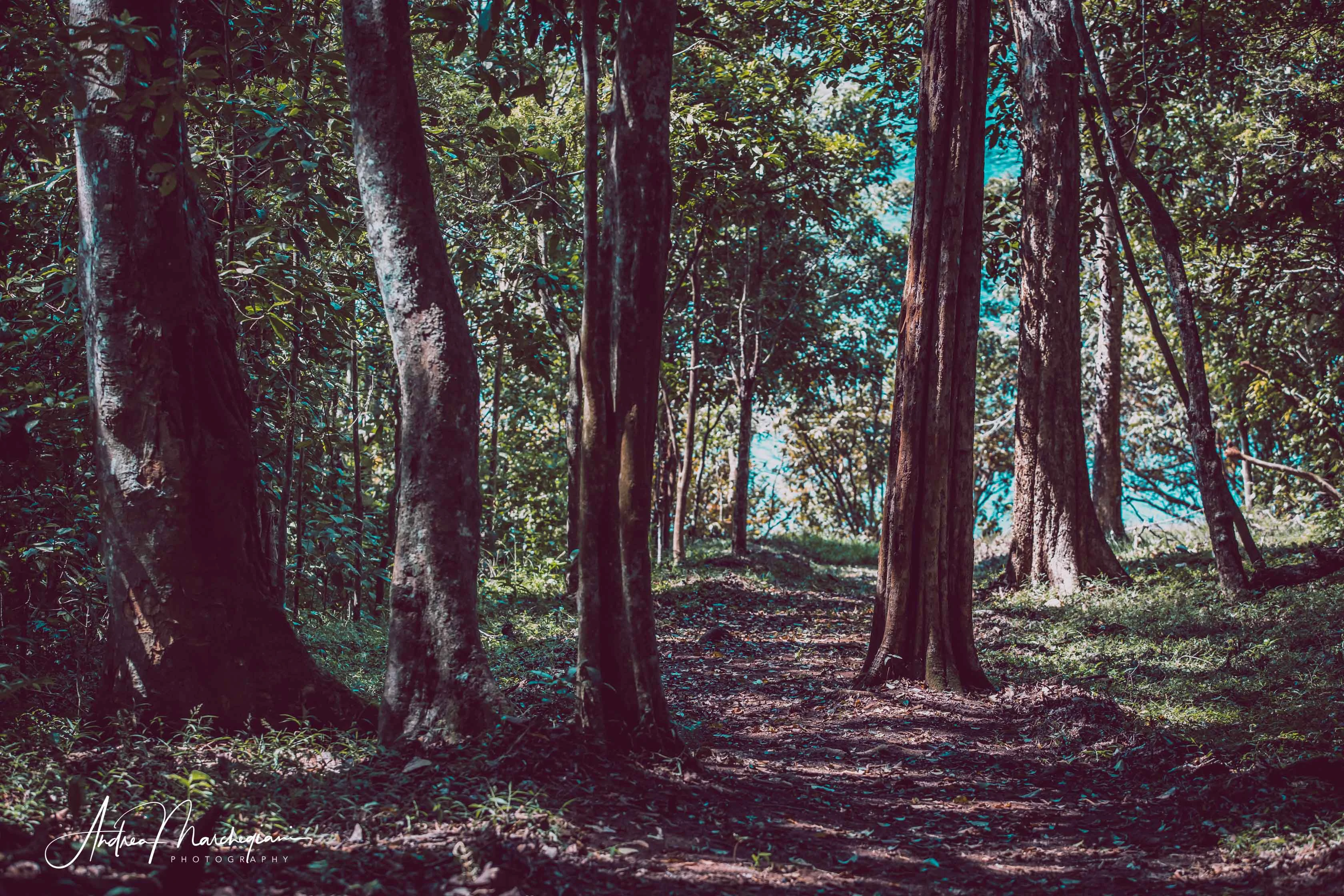
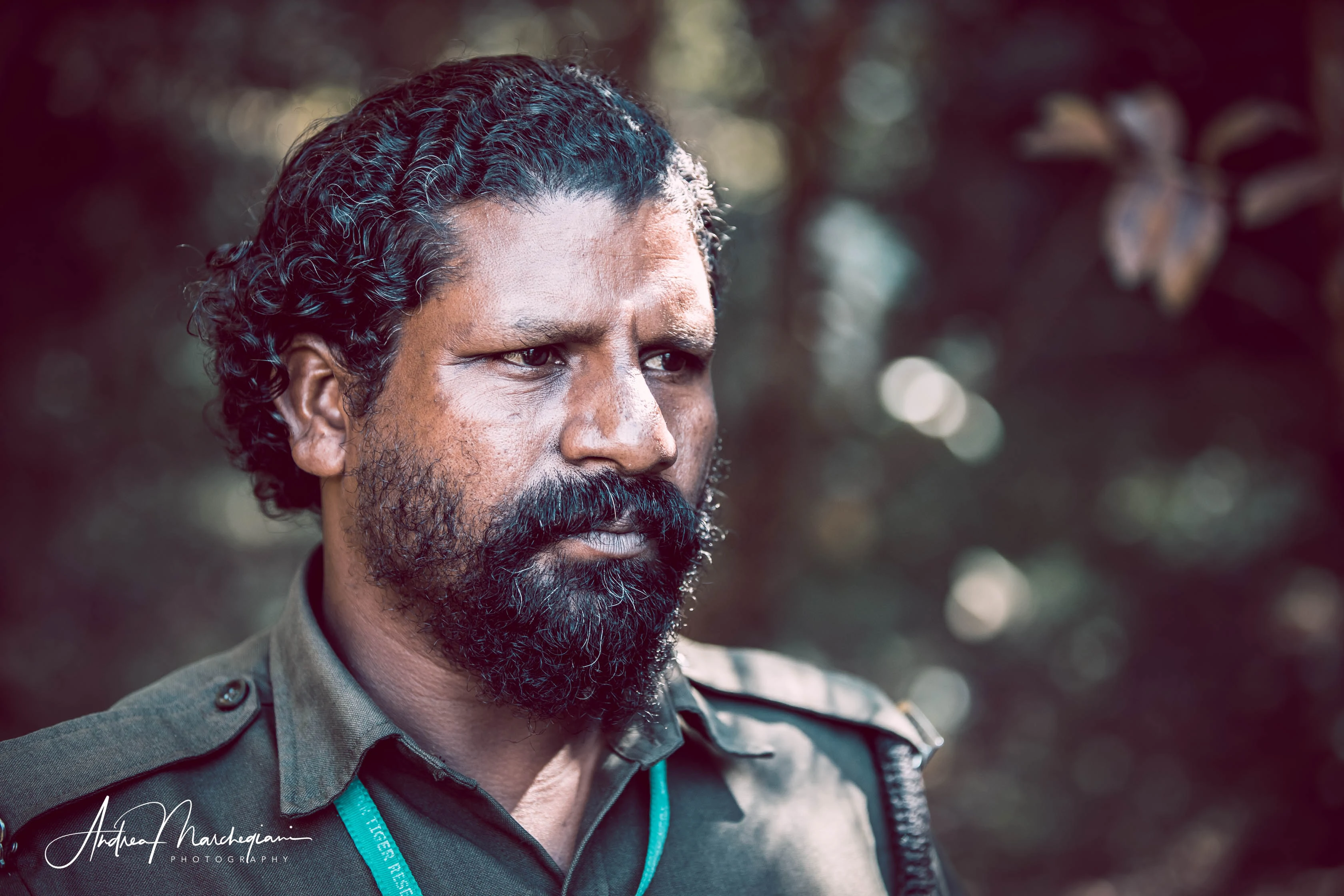
Periyar, halfway between nature reserve and role-playing game!
Booking a guided tour of Periyar National Park is as easy as drinking a glass of water. Simply ask at the lobby of your hotel, which will provide you with a colorful brochure with photos of exotic animals and a rich list of customized guided tours: you can board a jeep and explore the avenues of the park, enjoy a couple of hours’ trek and explore the area on foot or experience the thrill of venturing into the forest at night.
Whichever option is chosen, it is not possible to enter the innermost part of the reserve, where animals live in the wild and without any contact with humans, nor to go around without the escort of a trained and experienced guide.
And maybe this is what really made my visit to the reserve of Periyar unique: the charisma, the preparation and the acting ability of the guide has transformed an experience not very authentic and decidedly tourist in a continuous daydream.
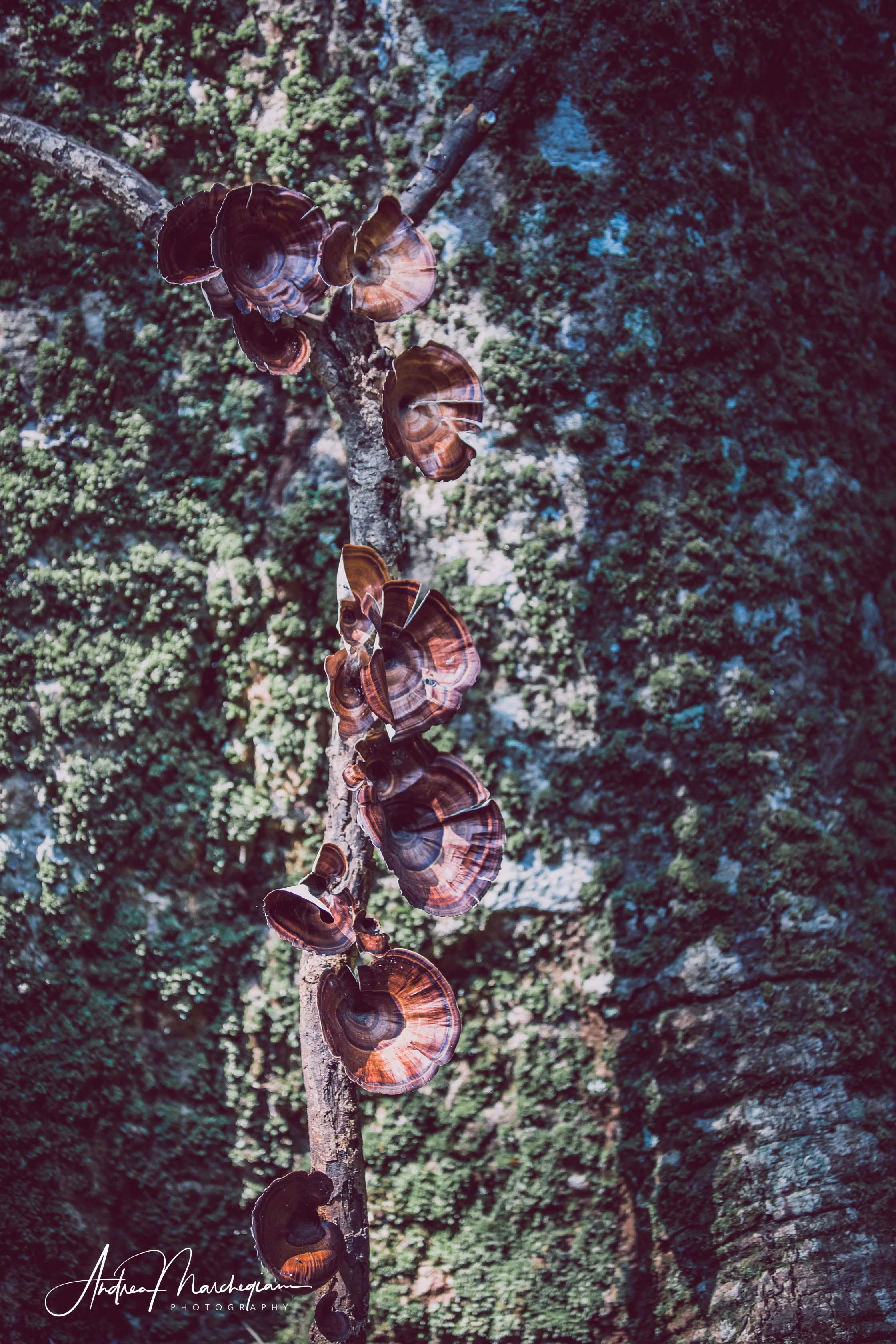
The ticket office is on the civilized bank of the river: I cross it on a raft of big bamboo reeds, which fords the quiet river and takes me to the other side, where the wild nature is waiting for me.
“Please be quiet, it is very dangerous here”, whispers John, my valiant guide. “Be careful where you step, you might get bitten by a snake. Indian cobra venom is lethal. And stay close to me. Tigers and elephants may attack you, especially if they approach the river to quench their thirst with their cubs. But we will be safe if we remain in group”.
John’s serious and melodramatic gaze produces two opposing effects on me: it amuses and terrifies me at the same time.
“If it was so dangerous, I don’t think we’d be here,” I’m trying to play it down. Yet all members of the group huddle tightly around John, like soft chicks in a nest.
John tells us about elephants loading the jeeps of the forest guards and gives us detailed instructions on how to survive the hungry tigers. Now and then, he stops to illustrate the flora of the place: ebony trees, parasitic fungi, a thousand types of orchids. Then we see a sequence of small animals: a wild cock, a colorful-beaked toucan, black monkeys perched like shadows on the tops of teak trees.
Nothing exciting, you know.
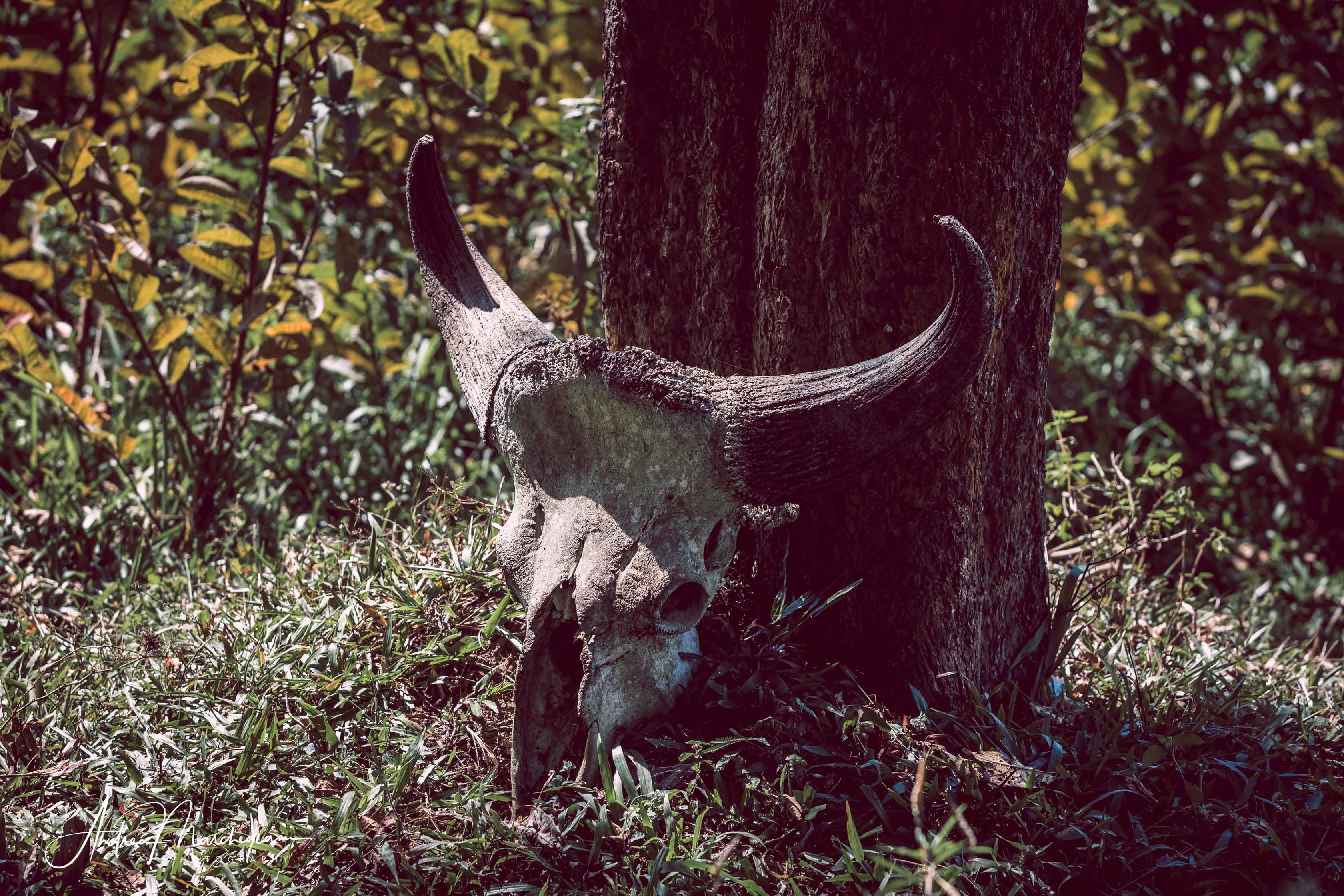
“Can you see this?” John points to a buffalo skull elegantly resting on a tree trunk along the beaten path. “It is what remains of an adult male”. Head and horns reach the height of 1.50 m.
The suggestion initially created by our histrionic guest begins to fade into boredom and distraction, and that’s when John adds some meat to the bone. He scours the surroundings with his binoculars, identifies something and turns to us, the glassy eyes of those who have just seen a ghost.
“Be quiet and follow me. There is a wild dog along the river, it is not easy to spot them in this area of the park”.
We run to the clearing with clumsy movements, trying not to step on shrubs or dry grass. The wild dog could run away at the slightest noise. Finally the wood opens onto a beautiful body of water… and there it is, the wild dog. “Sensational!” exclaims John with great satisfaction. “Let us not approach further, the wild dog is an aggressive animal and its bites are ferocious. You’re really lucky to be here today!”
Maybe, but to me it just seems like a mix between a dog and a fox.
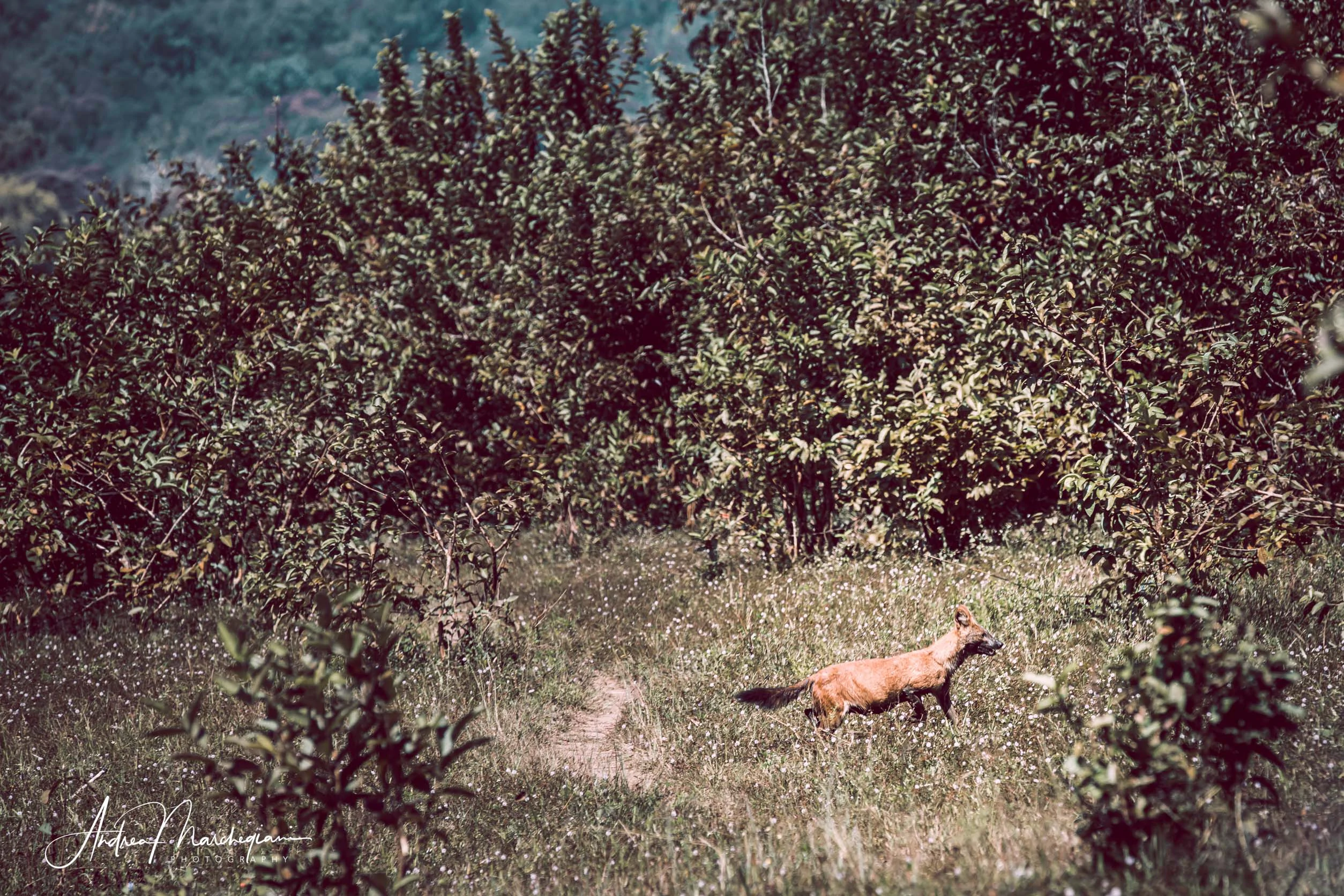
Disappointment is again around the corner when John receives a call over the walkie-talkie. “No way!” John whispers, “Unbelievable! Yes, we are just minutes away.”
With his eyes lit by the fire of passion, John informs us that a family of elephants has been spotted in the heart of the clearing. We are just a few minutes from there, we have to run fast if we don’t want to miss the show. “Be careful. It is very ve-ry ve-ry dangerous!”
John turns and starts to run, as fast as the wind. This time I can feel that he is running for himself. He doesn’t want to show us the elephants, he wants to see them himself. There is nothing better than chasing an Indian forest guard to understand how out of practice I am: I leave with great enthusiasm, imagining myself strong and macho like Indiana Jones, but every passing minute my face turns into a pressure kettle. Sweat slides down my forehead, mixes with sunscreen and melts into my eyes like liquid fire. I bet John’s not sweating, and he sure as hell doesn’t have sunscreen 50 on his face. In any case, I can keep up and we stop a hundred meters away from the elephants. The mother and her cubs walk in the clearing, lazily pulling the leaves from the branches of the trees.
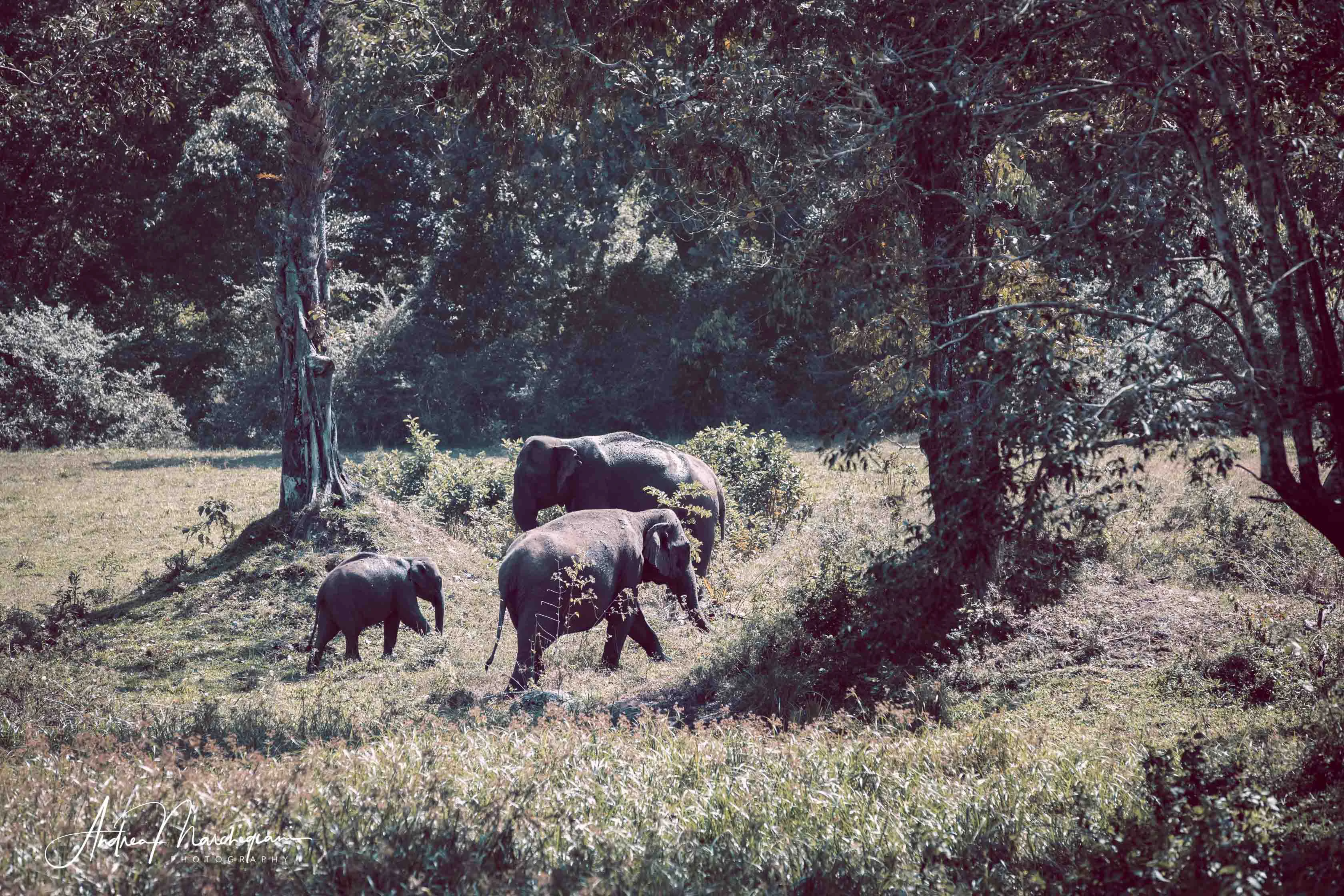
John tells us we can’t get any closer. Then he takes a look at my camera, the 70-200 zoom doesn’t go unnoticed. “Are you a professional photographer?” he asks. “Yes, and without the camera I run much better”. I lie knowing I lie. “Follow me, we’ll get a few more feet closer,” he whispers. “But-p-lease-be-care-ful!”
No need to tell me to be careful, as any hypochondriac of the X generation I am always careful. John takes me by the hand and takes me a few meters from the most beautiful family of elephants in all of India. At least that’s how I intend to remember them. They don’t do much, they lazily walk, snatching some grass here and there.
“Have you taken enough pictures?” John asks me after a few minutes. “Yes, thank you.”
“We were lucky today, very lucky. Now let’s get out of the way, these elephants have already been very patient with us.”
“Do you think we’ll see tigers?”
“There are about 40 specimens left and they live in the central area, where it is not allowed to go”.
John leads us back to the raft, we cross the river and go back to human civilization. I observe him one last time: the trek to the park of Periyar is certainly not comparable to a safari in Botswana. Yet the charm created by John’s charisma and the passion he puts into his work have been worth the price of the ticket.
I’m happy to know that people like him take care of this incredible piece of nature and only now I really understand what the purpose of his work is: it’s not protecting visitors from wild animals, as you might think. His job is to do the exact opposite.
